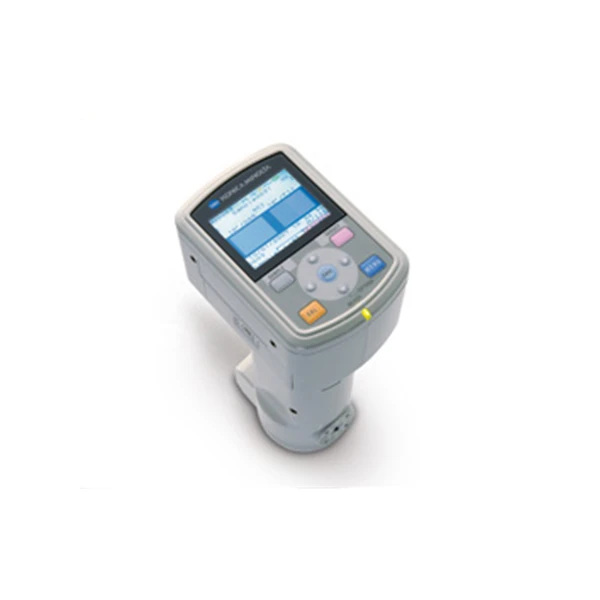การจับคู่สีสำหรับการบูรณะเซรามิก

ปัจจุบันมีเทคโนโลยีที่น่าประทับใจที่สามารถบรรลุสิ่งที่น่าทึ่งได้ความก้าวหน้าอันน่าทึ่งประการหนึ่งคือความสามารถในการระบุสีของวัตถุโดยใช้อุปกรณ์มือถือที่เรียกว่าสเปกโตรโฟโตมิเตอร์ วิธีการทำงานของเครื่องวัดสเปกโตรโฟโตมิเตอร์คือเพียงการส่งคลื่นแสงไปที่วัตถุและอ่านความยาวคลื่นในขณะที่แสงสะท้อนกลับ ทำให้เกิดสูตรสีที่สามารถนำมาใช้เพื่อให้เข้ากับสีได้อย่างลงตัว เทคนิคนี้มีประโยชน์ในทุกสาขา ตั้งแต่การก่อสร้าง การทาสีเชิงพาณิชย์ ไปจนถึงการบูรณะฟันด้วยเซรามิก
เซรามิกทันตกรรม
ทันตแพทย์จำนวนมากมักใช้วัสดุเซรามิกทั้งหมดในการบูรณะฟัน เช่น ครอบฟัน อินเลย์ ออนเลย์ และเคลือบฟันเทียม วัสดุนี้เป็นที่ต้องการของทั้งผู้ป่วยและทันตแพทย์ เนื่องจากประสบความสำเร็จในการรวมทั้งฟังก์ชันการทำงานและความสวยงามเข้าด้วยกันในแบบที่วัสดุอื่นๆ เพียงไม่กี่ชนิดทำได้ ทันตแพทย์ชื่นชมสิ่งเหล่านี้เนื่องจากเหตุผลทางเทคนิคอื่นๆ รวมถึงคุณสมบัติต่างๆ เช่น การนำความร้อนต่ำ ความเข้ากันได้ทางชีวภาพ ความต้านทานการสึกหรอ และอื่นๆ อย่างไรก็ตาม ยังคงมีปัญหาอยู่บ้างเกี่ยวกับวัสดุเซรามิกทั้งหมด และนั่นคือที่มาของสีที่เข้ากัน
ปัจจัยแห่งสี
ในบรรดาตัวชี้วัดต่างๆ สำหรับการประเมินวัสดุทางทันตกรรมที่เป็นเซรามิกทั้งหมด สีถือเป็นตัวบ่งชี้ที่สำคัญที่สุดอย่างหนึ่ง ความจริงก็คือ สีแสดงให้เห็นคุณสมบัติของวัสดุ รวมถึงความหนาของพอร์ซเลน ความยึดเกาะ และอื่นๆ วัสดุลิเธียมไดซิลิเกตชนิดใหม่ที่เรียกว่า IPS e.max ปัจจุบันเป็นวัสดุเซรามิกที่ใช้กันทั่วไป ซึ่งขจัดจุดอ่อนและข้อบกพร่องของวัสดุเซรามิกประเภทอื่นๆ ตัวอย่างเช่น ผลิตภัณฑ์อื่นๆ เคยเปราะและมีแนวโน้มที่จะแตกร้าว แต่ IPS e.max มีความต้านทานแรงดัดงอที่สูงมาก ซึ่งทนทานต่อความเสียหายประเภทนั้น เนื่องจาก IPS e.max เป็นเซรามิกที่นิยมใช้กันมากที่สุดในการบูรณะฟัน เครื่องวัดสเปกโตรโฟโตมิเตอร์จึงสามารถใช้เพื่อประเมินคุณภาพสีของการบูรณะฟันได้ เนื่องจากสามารถใช้เครื่องวัดสเปกโตรโฟโตมิเตอร์ในการวิเคราะห์ความโปร่งแสงของสีของ IPSe.max ได้อย่างง่ายดาย
เครื่องสเปกโตรโฟโตมิเตอร์
ทันตแพทย์มักจะทราบเกี่ยวกับความหนาของแกนกลางของการบูรณะฟันโดยใช้ เครื่องสเปกโตรโฟโตมิเตอร์CM-700dโดยทั่วไป ความหนามีผลกระทบอย่างมีนัยสำคัญต่อทั้งสีและความโปร่งแสงของการบูรณะด้วยเซรามิกทั้งหมด การวัดเป็นเรื่องง่ายโดยชี้ไปที่การบูรณะและทำให้แน่ใจว่าคุณภาพมีความสม่ำเสมอ ในขณะเดียวกัน การจับคู่สีก็มีความสำคัญด้วยเหตุผลด้านความสวยงาม เนื่องจากผู้ป่วยมักไม่ต้องการแยกฟันในเฉดสีที่ต่างกัน ทั้งหมดนี้ขึ้นอยู่กับความสามารถของสเปกโตรโฟโตมิเตอร์ในการระบุและสร้างสีในระดับที่แม่นยำอย่างน่าทึ่ง สาขาวิชาทันตกรรมได้รับการปรับปรุงให้ดีขึ้นอย่างเห็นได้ชัดด้วยเครื่องสเปกโตรโฟโตมิเตอร์และการจับคู่สีด้วยโอกาสในการบูรณะฟันด้วยเซรามิกทั้งหมดที่แข็งแกร่งและโปร่งแสง ทั้งผู้ป่วยและทันตแพทย์ต่างชื่นชมสิ่งที่เป็นไปได้ และสิ่งที่เป็นไปได้มากมายในปัจจุบันก็เนื่องมาจากเครื่องสเปกโตรโฟโตมิเตอร์ CM-700d และการจับคู่สี
หากคุณต้องการทราบเกี่ยวกับ สเปกโตรโฟโตมิเตอร์ CM-700d ของ Konica Minolta หรือผลิตภัณฑ์อื่นๆ ของเรา โปรดโทรหาเราที่ +65 6895 8685 หรือติดต่อเราผ่าน เว็บไซต์ ของ เรา
เกี่ยวกับผู้แต่ง: Alan Chua
Alan Chua เป็นผู้ช่วยผู้จัดการของ Konica Minolta Sensing Singapore Pte Ltd. สำเร็จการศึกษาจากภูมิหลังด้านวิศวกรรมไฟฟ้า โดยเขาเกี่ยวข้องกับการขาย การสัมมนา การฝึกอบรม และการฝึกสอนในด้านการจัดการแสงและสีเป็นหลัก ด้วยประสบการณ์ 18 ปีในการจัดการและจัดหาโซลูชั่นสำหรับการใช้งานในอุตสาหกรรมต่างๆ เขายังจัดสัมมนาและเวิร์คช็อปเรื่องสีเพื่อให้ความรู้แก่อุตสาหกรรมเกี่ยวกับเทคโนโลยีเครื่องมือวัดและวิทยาศาสตร์สีอีกด้วย เขายังได้รับเชิญให้เป็นวิทยากรในงานสัมมนา The Academy of Fashion Professions (TaF.tc) ซึ่งเป็นหน่วยงานฝึกอบรมของ Textile & Fashion Federation (TaF.f.f) เขายังเป็นวิทยากรในการประชุม Color Cosmetics Conference

